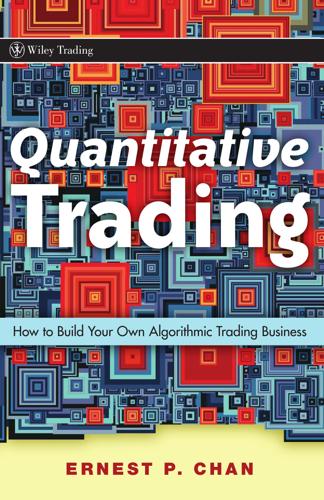
Quantitative Trading: How to Build Your Own Algorithmic Trading Business
by
Ernie Chan
Published 17 Nov 2008
If this happens, it is “back to the drawing board.” You should be able run your ATS, execute paper trades, and then compare the paper trades and profit and loss (P&L) with the theoretical ones generated by your backtest program using the latest data. If the difference is not due to transaction costs (including an expected delay in execution for the paper trades), then your software likely has bugs. (I mentioned the names of some of the brokerages that offer paper trading accounts in Chapter 4.) Another benefit of paper trading is that it gives you better intuitive understanding of your strategy, including the volatility of its P&L, the typical amount of capital utilized, the number of trades per day, and the various operational difficulties including data issues.
…
If your trading strategy depends on data or news prior to the market open that cannot be more than 35 minutes old, then you need to either figure out a different execution environment or modify your P1: JYS c05 JWBK321-Chan September 24, 2008 13:55 Printer: Yet to come 90 QUANTITATIVE TRADING strategy. It is hard to figure out all these timing issues until paper trading is conducted.) If you are able to run a paper trading system for a month or longer, you may even be able to discover data-snooping bias, since paper trading is a true out-of-sample test. However, traders usually pay less and less attention to the performance of a paper trading system as time goes on, since there are always more pressing issues (such as the real trading programs that are being run). This inattention causes the paper trading system to perform poorly because of neglect and errors in operation. So data-snooping bias can usually be discovered only when you have actually started trading the system with a small amount of capital.
…
The only point to note here is that without an API, high-frequency quantitative trading is impossible. Closely related to the availability of API is the availability of paper trading accounts. If a brokerage does not offer you a paper trading account, it is very hard to test an API without risking real losses. Among the brokerages I know that offer paper trading accounts are Interactive Brokers, Genesis Securities, PFG Futures (for futures trading), and Oanda (for currency trading). P1: JYS c04 JWBK321-Chan 74 September 24, 2008 13:53 Printer: Yet to come QUANTITATIVE TRADING In addition to paper trading accounts, some brokerages provide a “simulator” account (an example is the demo account from Interactive Brokers), where quotes from the past are displayed as if they were real-time quotes, and an automated trading program can trade against these quotes at any time of the day in order to debug the program.
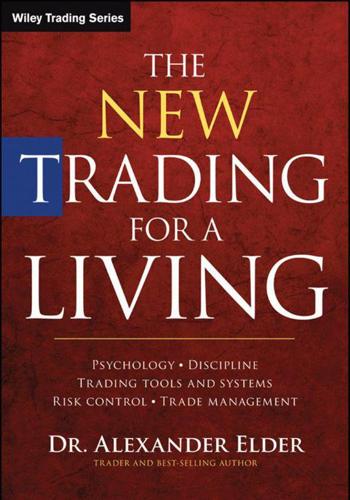
The New Trading for a Living: Psychology, Discipline, Trading Tools and Systems, Risk Control, Trade Management
by
Alexander Elder
Published 28 Sep 2014
Do it in steps, all the way up to your normal trade size. Paper Trading Paper trading means recording your buy and sell decisions and tracking them like real trades, but with no money at risk. Beginners may start out paper trading, but most people turn to it after getting beat up by the markets. Some even alternate between real and paper trades and can't understand why they seem to make money on paper but lose whenever they put on a real trade. There are three reasons. First, people are less emotional with paper trades, and good decisions are easier to make with no money at risk. Second, in paper trades, you always get perfect fills, unlike real trading.
…
The easy-looking ones are more likely to lead to problems. A nervous beginner jumps into obvious-looking trades and loses money, but paper trades the more challenging ones. It goes without saying that hopping between real and paper trades is sheer nonsense. You either do the one or the other. Psychology plays a huge role in how your trades turn out, and that's where paper trading fails to deliver. Pretend-trading with no money at risk is like sailing on a pond—it does little to prepare you for real sailing on a stormy sea. There is only one good reason to paper trade—to test your discipline as well as your system. If you can download your data at the end of each day, do your homework, write down your orders for the day ahead, watch the opening and record your entries, then track your market each day, adjusting your profit targets and stops—if you can do all of this for several months in a row, recording your actions, without skipping a day—then you have the discipline to trade real money.
…
An impulsive person who trades for entertainment will not be able to paper trade that way because it requires real work. You may open an account with one of several websites set up for paper trading. Enter your orders, check whether they have been triggered, and write down those “fills.” Enter all paper trades in your spreadsheet and your trading diary. If you have the willpower to repeat this process daily for several months, then you have the discipline for successful real trading. Still, there is no substitute for trading real money because even small amounts rev up emotions more than any paper trade. You'll learn much more from even small real trades than from months of paper trading.
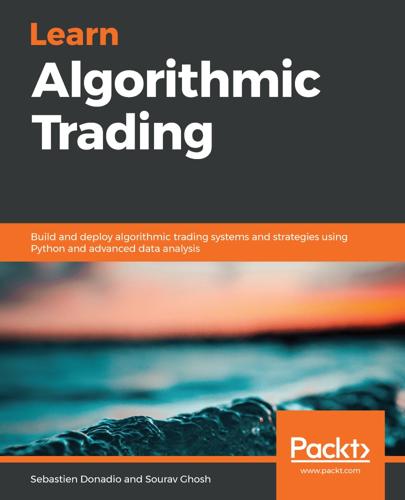
Learn Algorithmic Trading
by
Sebastien Donadio
Published 7 Nov 2019
This code shows that the logic of the trading strategy uses the same code as the for-loop backtester. The create_metrics_out_of_prices and buy_sell_or_hold_something functions are untouched. The main difference is regarding the execution part of the class. The execution takes care of the market response. We will be using a set of variables related to the paper trading mode to show the difference between actual and paper trading. Paper trading implies that every time the strategy sends an order, this order is filled at the price asked by the trading strategy. On the other side of the coin, the handle_market_response function will consider the response from the market to update the positions, holdings, and profit and loss.
…
Then, we will use this model to validate our model with the out-of-sample data: When we build a trading strategy, it is important to set aside between 70% and 80% to build the model. When the trading model is built, the performance of this model will be tested out of the out-of-sample data (20-30% of data). Paper trading (forward testing) Paper trading (also known as forward performance testing) is the final step of the testing phase. We include the trading strategy to the real-time environment of our system and we send fake orders. After a day of trading, we will have the logs of all the orders and compare them to what they were supposed to be.
…
Choice of IDE – Pycharm or Notebook Our first algorithmic trading (buy when the price is low, and sell when the price is high) Setting up your workspace PyCharm 101 Getting the data Preparing the data – signal Signal visualization Backtesting Summary Section 2: Trading Signal Generation and Strategies Deciphering the Markets with Technical Analysis Designing a trading strategy based on trend- and momentum-based indicators Support and resistance indicators Creating trading signals based on fundamental technical analysis Simple moving average Implementation of the simple moving average Exponential moving average Implementation of the exponential moving average Absolute price oscillator Implementation of the absolute price oscillator Moving average convergence divergence Implementation of the moving average convergence divergence Bollinger bands Implementation of Bollinger bands Relative strength indicator Implementation of the relative strength indicator Standard deviation Implementing standard derivatives Momentum Implementation of momentum Implementing advanced concepts, such as seasonality, in trading instruments Summary Predicting the Markets with Basic Machine Learning Understanding the terminology and notations Exploring our financial dataset Creating predictive models using linear regression methods Ordinary Least Squares Regularization and shrinkage – LASSO and Ridge regression Decision tree regression Creating predictive models using linear classification methods K-nearest neighbors Support vector machine Logistic regression Summary Section 3: Algorithmic Trading Strategies Classical Trading Strategies Driven by Human Intuition Creating a trading strategy based on momentum and trend following Examples of momentum strategies Python implementation Dual moving average Naive trading strategy Turtle strategy Creating a trading strategy that works for markets with reversion behavior Examples of reversion strategies Creating trading strategies that operate on linearly correlated groups of trading instruments Summary Sophisticated Algorithmic Strategies Creating a trading strategy that adjusts for trading instrument volatility Adjusting for trading instrument volatility in technical indicators Adjusting for trading instrument volatility in trading strategies Volatility adjusted mean reversion trading strategies Mean reversion strategy using the absolute price oscillator trading signal Mean reversion strategy that dynamically adjusts for changing volatility Trend-following strategy using absolute price oscillator trading signal Trend-following strategy that dynamically adjusts for changing volatility Creating a trading strategy for economic events Economic releases Economic release format Electronic economic release services Economic releases in trading Understanding and implementing basic statistical arbitrage trading strategies Basics of StatArb Lead-lag in StatArb Adjusting portfolio composition and relationships Infrastructure expenses in StatArb StatArb trading strategy in Python StatArb data set Defining StatArb signal parameters Defining StatArb trading parameters Quantifying and computing StatArb trading signals StatArb execution logic StatArb signal and strategy performance analysis Summary Managing the Risk of Algorithmic Strategies Differentiating between the types of risk and risk factors Risk of trading losses Regulation violation risks Spoofing Quote stuffing Banging the close Sources of risk Software implementation risk DevOps risk Market risk Quantifying the risk The severity of risk violations Differentiating the measures of risk Stop-loss Max drawdown Position limits Position holding time Variance of PnLs Sharpe ratio Maximum executions per period Maximum trade size Volume limits Making a risk management algorithm Realistically adjusting risk Summary  Section 4: Building a Trading System Building a Trading System in Python Understanding the trading system Gateways Order book management Strategy Order management system  Critical components Non-critical components Command and control Services Building a trading system in Python LiquidityProvider class Strategy class OrderManager class MarketSimulator class TestTradingSimulation class Designing a limit order book Summary Connecting to Trading Exchanges Making a trading system trade with exchanges Reviewing the Communication API Network basics Trading protocols FIX communication protocols Price updates Orders Receiving price updates Initiator code example Price updates Sending orders and receiving a market response Acceptor code example Market Data request handling Order Other trading APIs Summary Creating a Backtester in Python Learning how to build a backtester  In-sample versus out-of-sample data Paper trading (forward testing) Naive data storage HDF5 file Databases Relational databases Non-relational databases Learning how to choose the correct assumptions For-loop backtest systems Advantages Disadvantages Event-driven backtest systems Advantages Disadvantages Evaluating what the value of time is Backtesting the dual-moving average trading strategy For-loop backtester Event-based backtester Summary Section 5: Challenges in Algorithmic Trading Adapting to Market Participants and Conditions Strategy performance in backtester versus live markets Impact of backtester dislocations Signal validation Strategy validation Risk estimates Risk management system Choice of strategies for deployment Expected performance Causes of simulation dislocations Slippage Fees Operational issues Market data issues Latency variance Place-in-line estimates Market impact Tweaking backtesting and strategies in response to live trading Historical market data accuracy Measuring and modeling latencies Improving backtesting sophistication Adjusting expected performance for backtester bias Analytics on live trading strategies Continued profitability in algorithmic trading Profit decay in algorithmic trading strategies Signal decay due to lack of optimization Signal decay due to absence of leading participants Signal discovery by other participants Profit decay due to exit of losing participants Profit decay due to discovery by other participants Profit decay due to changes in underlying assumptions/relationships Seasonal profit decay Adapting to market conditions and changing participants Building a trading signals dictionary/database Optimizing trading signals Optimizing prediction models Optimizing trading strategy parameters Researching new trading signals Expanding to new trading strategies Portfolio optimization Uniform risk allocation PnL-based risk allocation PnL-sharpe-based risk allocation Markowitz allocation Regime Predictive allocation Incorporating technological advances Summary Final words Other Books You May Enjoy Leave a review - let other readers know what you think Preface In modern times, it is increasingly difficult to gain a significant competitive edge just by being faster than others, which means relying on sophisticated trading signals, predictive models, and strategies.
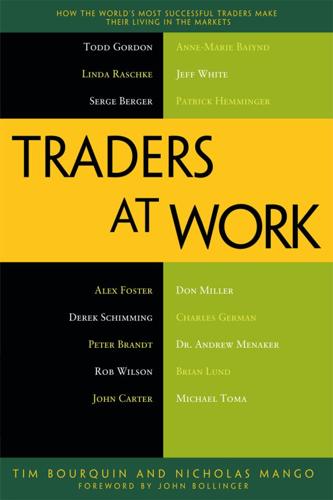
Traders at Work: How the World's Most Successful Traders Make Their Living in the Markets
by
Tim Bourquin
and
Nicholas Mango
Published 26 Dec 2012
The best thing to do is practice. Open a paper trading account, size up the market to find good trades, then take and work through those trades. If you can’t make money in a paper trading account, you won’t be able to do it with a real account, either—no doubt about it. Bourquin: And along those same lines, even if you are able to make money in a paper trading account, that’s no guarantee that you’ll make money in a real account, right? Baiynd: Exactly. There is a different feel when trading with real money, as well as the added psychological stress, and that’s the real kicker. Bourquin: Some people say paper trading isn’t worthwhile, because it doesn’t indicate that you’ll be successful when trading with real money.
…
I Index A Average directional index (ADX) Average true range (ATR) B Baiynd, Anne-Marie course offered daily and weekly time frames double-top action Elliott wave Fibonacci future market longer-term investment market internal mathematician moving average multiple time frames new trader paper trading paper trading account real money trading recruiting role retail trading Simple moving average (SMA) stochastic momentum indicator SUCCESS Magazine seminar, technical trading support and resistance swing trade technical analysis technical indicator technical trader trading day Berger, Serge Advance/Decline (A/D) line Apple Bloomberg terminal currency futures daily chart day-in and day-out economic data in equities equities, equity options, and futures extreme candles favorable intraday financial analyst full gap gap trades half gap liquidity injections longer-term positions macro view mean-reversion trade mind off the markets momentum oscillator opening gap positions reversal candle S&P 500 E-mini futures seasonal factors slow stochastics swing positions swing trade technical analysis technical tools time frame trade duration trade futures trading environment trading methodology trading opportunity trend reversal US equity indices watch list Booker, Rob Brandt, Peter algorithmic trading bid/offer spreads candlestick charts chart trader classical charting definition patterns principles closing price charts commodities floor trader cookie cutter approach corn spread corn trader currency futures Diary of a Professional Commodity Trader electronic trading entry point futures trader head-and-shoulders patterns high bar charts intraday charts longer-term time frames longer-term trades long-term charts margin-to-capital ratio margin-to-equity ratio market signaling niche—money management pit trading positions risk management Russell trade scale out short-term charts standard stop-loss swing trader Technical Analysis of Stock Trends trend line volume/open interest profile weekly chart C, D California Institute of Technology Carter, John best trade big volume Bollinger Bands breakeven career day trader dot-com crash down payment financial analyst first trading day five-year learning curve fundamental factors garden-variety trade great traders overnight guaranteed income industry trends Keltner Channels loan documentation Mastering the Trade money build up money management OEX trade options professional trader resistance point retail traders shorter-term trading SimplerOptions.com six-figure income smaller traders success measurement swing trades teaching technical analysis technical approach tech stocks The Disciplined Trader the squeeze time frames time spent TradeTheMarkets.com trading industry trading lifestyle trading philosophy trading place trading slumps volatile markets Certified Risk Manager (CRM) Chicago Board of Trade Chicago Mercantile Exchange (CME) City Slickers movie Commodity Trading Advisor (CTA) Currency Strength Index E E-mini S&P futures (ES) European Central Bank (ECB) Exchange-traded funds (ETFs) Exponential moving average (EMA) F Floyd, Gordon & Partners (FGP) Foster, Alex arbitrary profit targets assignment bear market best indicator buy-and-hold approach client vs. own account contract size economic reports ideal trade long-term trend Monsanto and JPMorgan Chase moving averages news following open positions position size price point profitable trades profit targets S&P 500 shorter-term crossover shorter-term moving averages technical indicators time frame trading options trend follower Williams %R G GAIN Capital Asset Management Gartman, Dennis German, Charles ATR automated trading system backtesting daily chart future market green trade independent trader market portfolio mentors money management moving average price action risk management rule-based approach scaling out screen-based trading software stand-alone type of program system rule trend following definition strategies tools Gordon, Todd Aspen Trading Group Australian Dollar average winner and average loser bank research Blue Chips movie chat room CNBC correlation analysis currency markets currency trade day trading decision making Elliott Wave analysis count methodology E-Trade account Fast Money Floyd, Gordon & Partners (FGP) FOREX.com, senior technical strategist Forex trading GAIN Capital Asset Management, senior trader global market analysis hedge fund initial amount, full time trading investment banks leverage magic methodology market information market makers market volatility Money in Motion moving averages NASDAQ new trader NYSE stocks NYSE trading strategy personal account research reports research time S&P 500 futures schooling share size shortcuts short-term momentum trading short-term traders SOES bandit sports analogies stock-picking service stop loss Strategy of the Day technical analysis technical charts trader quality trading jobs trading style trend lines H, I, J Hemminger, Patrick agricultural futures trading agricultural pairs trading Brent curve calendar spread commodities core position crude curve economic releases E-Mini S&P vs.
…
Honestly, I was a tremendous gunslinger, and the only reason I stand here today is because I started with so much money that I was able to lose vast quantities. Eventually, though, my husband convinced me that I had to stop trading and figure out what was going on first. Although I didn’t want to sit out and not trade, that turned out to be the best advice I ever got. So, I began paper trading, and I went from simple to mildly complex concepts, working through them piece by piece. I started by learning moving averages, and from there I fell into Fibonacci after seeing it on a Twitter feed. I knew what the Fibonacci sequence was already, and when I started looking at it, the wave retracements made so much sense to me.

High-Frequency Trading: A Practical Guide to Algorithmic Strategies and Trading Systems
by
Irene Aldridge
Published 1 Dec 2009
Implementation Shortfall The implementation shortfall (IS) measure due to Perold (1988) measures the efficiency of executing investment decisions. The IS is computed as the difference between the realized trades and the trades recorded in paper trading. The paper trading process usually runs in parallel with the live process and records all the trades as if they were executed at desirable price at optimal times. The paper-trading system of Perold (1988) executes all trades at the mid-point between the market bid and ask quotes, ignoring all transaction costs (spreads, commissions, etc.). The paper-trading system also assumes that unlimited volume can be processed at any point in time at the market price, ignoring the market depth or liquidity constraints and the associated slippage and market impact.
…
At this point, however, the system is still in the testing phase and the system’s ability to send production orders is disabled. Instead, all orders that would be sent to the broker-dealer are recorded in a text file. This testing phase of the system on the real-time data is referred to as “paper-trading.” Once paper-trading performance is satisfactory and comparable to that of the back test, paper-trading is moved into production. Continuous human supervision of the system is required to ensure that the system does not fall victim to some malicious activity such as a computer virus or a market event unaccounted for in the model itself. The role of the human trader, however, should normally be limited to making sure that the performance Implementing High-Frequency Trading Systems 243 of the system falls within specific bounds.
…
System Implementation The models are often built in computer languages such as MatLab that provide a wide range of modeling tools but may not be suited perfectly for high-speed applications. Thus, once the econometric relationships are ascertained, the relationships are programmed for execution in a fast computer language such as C++. Subsequently, the systems are tested in “paper-trading” with make-believe capital to ensure that the systems work as intended and any problems (known as “bugs”) are identified and fixed. Once the systems are indeed performing as expected, they are switched to live capital, where they are closely monitored to ensure proper execution and profitability.

Risk Management in Trading
by
Davis Edwards
Published 10 Jul 2014
For example, an out-of-sample test might analyze whether a strategy is expected to work well under both rising and falling markets. It might also analyze how the strategy reacts to market volatility or extreme events like market crashes. Forward Testing/Paper Trading After historical testing is concluded, the next step in the development of a trading strategy is to simulate the strategy in conditions that are as close to real life as possible. This step is called forward testing, phantom trading, or paper trading. In the paper-trading stage, the strategy is run in real time each day. However, instead of executing real orders, simulated orders and simulated executions are created. This data can then be analyzed for reasonability.
…
As a result, historical simulation often doesn’t identify problems associated with the timing of when data is available to the market. Paper trading might identify that the trader assumed that the trade could be executed a half hour before the necessary data had arrived. Paper trading is also a way to help estimate transaction costs that might be incurred in the execution process. For example, a model might assume that the trader might pay a bid/ask spread based on typical market conditions. Paper trading allows the model to observe the bid/ask spread at the expected time of trading under realistic conditions. After becoming familiar with handling the model during the day, it is time to start practicing with the model with limited amounts of money.
…
Backtestingg is the process of testing a trading strategy or idea over prior time periods. Out-of-Sample Backtesting. Out-of-sample backtestingg splits the historical data into two portions—a portion that is used to develop the strategy and a portion used to test the data. This reduces some issues associated with strategies that look good in testing but can’t be repeated. Paper Trading. Paper tradingg, also called phantom trading, is simulated trading that attempts to duplicate the actual process of making trades, recording profits and losses, and estimating transaction costs in a live simulation. Live Testing. Live trading is the process of using small-sized trades to test the feasibility of the transaction under real-life conditions.
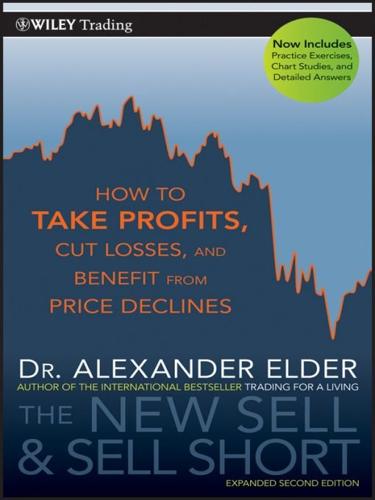
The New Sell and Sell Short: How to Take Profits, Cut Losses, and Benefit From Price Declines
by
Alexander Elder
Published 1 Jan 2008
Whenever I glance at my diary in Outlook, the yellow labels call attention to themselves, reminding me that these trades are open and I need to manage them. Purple. Planned trade. Once implemented, I drag the icon into the box of the day on which I traded and change the label to yellow for an open trade. Green. Profit. Blue. Profit Demerit. I made money on this trade but less than I should have, or violated my own rules. Brown. Research (a paper trade). Figure 3.4 Trading Diary—DB, Entry, Weekly Chart Most of my diary entries include two charts—a weekly and a daily. Depending on the trade, I might also add a monthly or intraday chart. Figures 3.4 and 3.5 show an example of a diary entry. The weekly DB chart (Figure 3.4) shows the source of a trading idea—an e-mail from a friend who ran several market scans and shared the results with me.
…
A good way to set a target for a swing trade is to use either a moving average or a channel. To estimate a profit target for a long-term trade it pays to examine long-term support and resistance. Putting on a trade is like jumping into a fast-moving river. You can walk up and down the shore, looking for a spot to jump in. Some people spend a lifetime on the shore, paper-trading their way through life. You are safe on the shore: your skin is dry and your cash is earning interest in a money market account. One of the very few things in trading you can totally control is the moment you decide to jump in. Do not allow restlessness or anxiety to push you in before you find a good spot.
…
If you keep learning from your experiences, you will become a better trader tomorrow than you are today! In retrospect, I could have held much longer—but at the time of the exit there was no clear way of knowing that those rallies would come. There are two sure-fire ways to nail every bottom and top. One is to paper-trade on old charts; the other is to lie about your trades. For the real traders risking real money, fast dimes are better than slow dollars. You have to develop a style of trading that feels comfortable to you and follow it without regrets. Regret is a corrosive force in trading. If you kick yourself for leaving some money on the table today, you will reach out too far tomorrow—and fail.
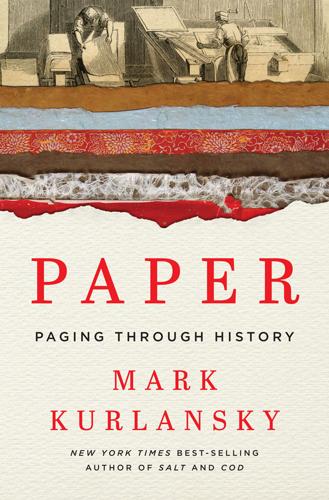
Paper: A World History
by
Mark Kurlansky
Published 3 Apr 2016
Skilled papermakers were in great demand in other parts of Italy, however, and Fabriano artisans started mills in Bologna, Amalfi, Foligno, Lucca, and Lombardy. Venice, which controlled an important paper trade with Turkey, made no paper of its own because the city was flat and lacked fresh water. But as soon as the Venetians gained control of their outlying region—Treviso, Padua, Udine—they brought in Fabriano papermakers to start mills. All the “maritime republics” also became important paper centers. These were port cities—Genoa, Venice, Pisa, and Amalfi—that became independent states grown affluent from trade, shipbuilding, and banking, as well as papermaking and paper trading. The greatest limitation on paper production was getting enough rags.
…
The area around Fabriano was well known for its wool production and its mills, built along the rivers, to press wool into felt. Felt was not a new product; the ancient Greeks had made it. Franco Mariani, a paper historian in Fabriano, believes that merchants plying the wool trade to places such as Venice, where the Arab paper trade was prospering, came to learn about paper and started renting the felting mills out to papermakers. This practice soon became popular—sometimes just one or two of the mill rooms were rented out—as almost no change in equipment was needed for the conversion. All that the papermakers had to do was to put metal heads on the wool-pounding hammers to turn them into suitable rag beaters.
…
But by the turn of the century, these were commonplace, with illustrated Italian books being printed in Rome, Verona, and Naples, to be followed soon thereafter by Florence and Venice. In Naples in 1485, Sextus Riessinger, a German, printed a much-admired edition of the Greek classic Aesop’s Fables, illustrated with thirty-seven woodcuts for Italian publisher Francesco Del Tuppo. Venice, one of Europe’s most important paper trading centers, quickly became the printing capital of Italy. By the beginning of the sixteenth century, when Naples had 67 printers, Rome 41, and Florence only 37 despite its dominance in art, Venice had 268. The first Venetian printer was a goldsmith from Mainz, Johannes de Spira. The chief magistrate of Venice, known as the doge, granted him an exclusive five-year contract to print books in Venice, but shortly after producing his first book in 1469, he died.
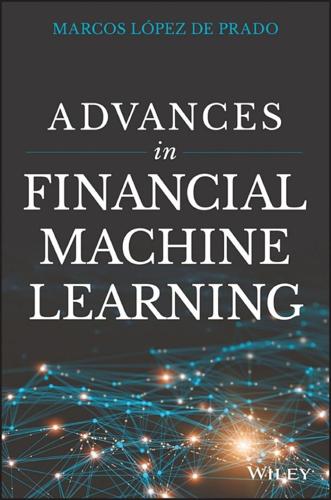
Advances in Financial Machine Learning
by
Marcos Lopez de Prado
Published 2 Feb 2018
Such a period may have been reserved by the backtesters, or it may be the result of implementation delays. If embargoed performance is consistent with backtest results, the strategy is promoted to the next stage. Paper trading: At this point, the strategy is run on a live, real-time feed. In this way, performance will account for data parsing latencies, calculation latencies, execution delays, and other time lapses between observation and positioning. Paper trading will take place for as long as it is needed to gather enough evidence that the strategy performs as expected. Graduation: At this stage, the strategy manages a real position, whether in isolation or as part of an ensemble.
…
Unfortunately, there is no generic recipe to conduct a backtest. To be accurate and representative, each backtest must be customized to evaluate the assumptions of a particular strategy. WF enjoys two key advantages: (1) WF has a clear historical interpretation. Its performance can be reconciled with paper trading. (2) History is a filtration; hence, using trailing data guarantees that the testing set is out-of-sample (no leakage), as long as purging has been properly implemented (see Chapter 7, Section 7.4.1). It is a common mistake to find leakage in WF backtests, where t1.index falls within the training set, but t1.values fall within the testing set (see Chapter 3).

The Self-Made Billionaire Effect: How Extreme Producers Create Massive Value
by
John Sviokla
and
Mitch Cohen
Published 30 Dec 2014
—THEODORE ROOSEVELT When she was twenty-seven years old, Yan Cheung used all of her savings—a sum of five thousand Hong Kong dollars—to start a Hong Kong–based paper-trading company that supplied paper pulp to manufacturers in mainland China. Five years later, in 1990, she abruptly shut down that growing business and moved to California to start over.1 Moving overseas looked like a huge risk. Mrs. Cheung spoke tentative English. She knew no one. Her list of local contacts was short, and the U.S. waste business was very insular.2 Practically any outside observer would have called her decision to bet her entire savings—again—foolhardy. But within ten years, the paper-trading company she started in California, America Chung Nam, had become the leading paper exporter in the United States—and she was only just beginning.
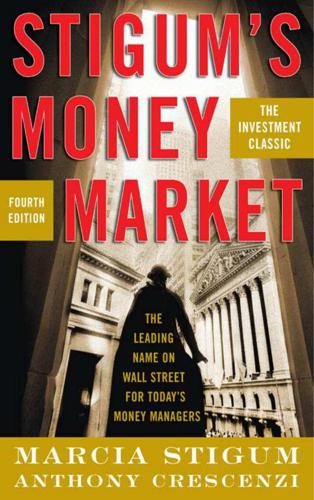
Stigum's Money Market, 4E
by
Marcia Stigum
and
Anthony Crescenzi
Published 9 Feb 2007
Normally, the spread between LIBOR and LIBID is very small, but it can widen because of market uncertainty or illiquidity. As noted in later chapters, LIBOR, because it is the true global cost of money, has become a key benchmark rate in the U.S. domestic money market. For example, in the U.S. commercial paper market, value is measured in terms of the spread at which such paper trades to LIBOR, not to T-bills. In the Euromarket, unlike the domestic market, all loans have fixed maturities, which can range anywhere from a few days to five years or longer. The general practice is to price loans at LIBOR plus a spread. On some term loans, the lending rate is fixed for the life of the loan.
…
To take an example, suppose commercial paper and bills in a given maturity range are normally spread X bp. The spread is now X + 15 bp, which more than compensates for the relatively greater risk and lesser liquidity of the commercial paper. Moreover, the dealer anticipates that the spread at which commercial paper trade to bills will narrow. Then the commercial paper has greater relative value than the bills, and by pointing this out to retail customers holding bills, the dealer could probably induce some of them to swap for a yield pickup out of their bills into commercial paper (to sell their bills and buy commercial paper).
…
Making heterogeneous paper more nearly homogeneous increased the ease with which CDs could be traded, and that in turn increased the attractiveness of CDs as a trading vehicle and, thereby, liquidity in the CD market. However, no dealer agreement—written or, in this case, understood—could make paper trade for long at a level other than that at which the forces of supply and demand determined it should trade. The extraordinary events of 1982 clearly demonstrated this; when both Chase and Contil experienced severe, well-publicized difficulties, no dealer or sophisticated investor thought either bank was in danger of failing.

Stock Market Wizards: Interviews With America's Top Stock Traders
by
Jack D. Schwager
Published 1 Jan 2001
It is much better to learn the lesson that you can lose everything when you don't have that much money than to learn the same lesson later on. I guess that implies you are not an advocate of paper trading for beginners. Absolutely. I think paper trading is the worst thing you can do. If you are a beginner, trade with an amount of money that is small enough so that you can afford to lose it, but large enough so that you will feel the pain if you do. Otherwise, you're fooling yourself. I have news for you: If you go from paper trading to real trading, you're going to make totally different decisions because you're not used to being subjected to the emotional pressure.
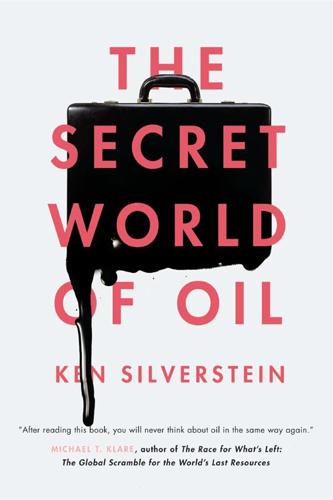
The Secret World of Oil
by
Ken Silverstein
Published 30 Apr 2014
A cause and effect of the big price swings is what my lunch companion called “the horrendous development” of a variety of hedging techniques and their growing sophistication.5 At most trading companies, he explained, one desk handles the physical trade in oil and another handles the paper trade. The job of the latter is to hedge the sales of the former, but in the past few decades the ratio of the daily physical trade to the paper trade has gone from roughly 1 to 1 to 40 or even 50 to 1. “People are sitting there all day just buying and selling paper barrels,” this person said. “Everyone knows we need better rules and regulations, but the people who are making money don’t want the rules to change.

New Market Wizards: Conversations With America's Top Traders
by
Jack D. Schwager
Published 28 Jan 1994
It was completely impulsive. I didn’t sit down and formulate any trading plan. I don’t know where the intuition comes from, and there are times when it goes away. 412 / The New Market Wizard How do you recognize when it goes away? When I’m wrong three times in a row, I call time out. Then I paper trade for a while. For how long do you paper trade? Until I think I’m in sync with the market again. Every market has a rhythm, and our job as traders is to get in sync with that rhythm. I’m not really trading when I’m doing those trades. There’s trading being done, but I’m not doing it. What do you mean you’re not doing it?
…
On the other hand, when you look at all the money I’ve produced over the years, I’ve been vastly underpaid. The more supertraders I interview, the more convinced I become that, at least to some degree, their success can be attributed to an innate talent. Bill Lipschutz provides an excellent example. His first encounter with trading actually involved paper trading in a college investment course. Lipschutz ended up running a hypothetical $100,000 into an incredible $29 million by the end of the course. Although this accomplishment has to be taken with a grain of salt because it didn’t involve real money and the rules of the experiment were flawed by the lack of realistic limitations on leverage, the results were striking nonetheless.

The 4-Hour Workweek: Escape 9-5, Live Anywhere, and Join the New Rich
by
Timothy Ferriss
Published 1 Jan 2007
On Monday, call two magazines (expect the first to be awkward) and use the script on the companion site to negotiate, minus the last firm offer. Get them as low as possible and then call them back later to indicate that your proposal was refused by upper management or otherwise vetoed. This is the negotiating equivalent of paper trading.49 Get used to refusing offers and countering in person and—most importantly—on the phone. TOOLS AND TRICKS Sample Muse Test Page The PX Method (www.pxmethod.com) This sales template was used to determine the viability of a speed-reading product, which tested successfully. Notice how testimonials, credibility indicators, and risk-reversal guarantees are used, as well as how the pricing is put on a separate page so it can be isolated as a testing variable.
…
If budget permits, increase the number of related terms and daily expenditure so that the entire PPC test costs $500–1,000. 46. This is a checking account for receiving credit card payments. 47. Set this up using services detailed at the end of this chapter and the next. 48. See the online bonus chapter on www.fourhourblog.com to understand all of these terms in context. Search “Jedi Mind Tricks.” 49. “Paper trading” refers to setting an imaginary budget, “purchasing” stocks (writing their current values on a piece of paper), and then tracking their performance over time to see how your investment would have done had it been for real. It is a no-risk method for honing investment skills before putting skin in the game.

Adaptive Markets: Financial Evolution at the Speed of Thought
by
Andrew W. Lo
Published 3 Apr 2017
Shaw & Co. had surpassed any contemporary academic research on market anomalies. It had advanced so far ahead that when someone outside the firm approached them to pitch a new trading strategy, they could often guess what it was and what was wrong with it just by looking at its simulated profits. “People would come in with the results they got by ‘paper-trading’ a proposed strategy with historical data, saying, ‘I’ve discovered this amazing effect!’ And we would reply, ‘We don’t want to know what your system is, but if you’d like some feedback, show us what the simulated returns are by month.’ After looking at them, we would sometimes be able to say something like, ‘Your strategy was probably some variant of the following, and this is the financial database you probably used; your simulated profits in this month, this month, and this month are attributable to errors in that database, and your overall returns are artificially high because of the following type of survivorship bias,’ and so on.”
…
Amir Khandani had just come back to MIT from a summer internship and was looking for a thesis topic. I suggested that we try to figure out what happened during the Quant Meltdown by simulating a simple quantitative equity trading strategy.26 A common practice in the investment business is to evaluate a particular strategy by performing a “backtest,” or “paper trading,” where you use historical prices to calculate the realized profits and losses of trades that the strategy would have called for. For example, suppose a superstitious friend tells you that you should never buy stocks on Friday the Thirteenth—is that good advice? One way to evaluate this advice is to compute the average return of the S&P 500 index between Fridays and Mondays for all Fridays that fall on the Thirteenth, and then do the same for all non-Thirteenth Fridays and Mondays, and compare the two averages.
…
Harold, 14, 24, 38 multistrategy funds, 293 multitasking, 122 Murphy, Kevin, 304–305 Murphy’s law, 248, 358, 361 muscular dystrophy, 409 mutation, 138, 144–146, 148, 168, 220 Muth, John, 33, 34–36, 37, 42, 181 mutual funds, 228–229, 299, 301, 409 narrative, 128–134, 302–303, 305–306, 312, 345–346, 365 NASDAQ, 286, 289, 333 National Bureau of Economic Research (NBER), 45, 71, 167, 317 National Institutes of Health (NIH), 400, 401, 402 National Security Agency (NSA), 239 National Transportation Safety Board (NTSB), 379–383 natural experiments, 24, 159 Naturalist (Wilson), 170 natural selection, 8, 134, 137, 139, 168, 195, 214, 215–216, 219, 345, 363; artificial selection vs., 142–143; fragility of, 148; of ideas, 207; linguistic ability favored by, 156, 187; modeling of, 216; multilevel, 220; mutation and, 144, 146; scientific discovery subject to, 140, as trial and error, 141 Nazism, 171, 174 NCAA basketball championship, 64–65 Neandertals, 151–152 negative externalities, 377–378 Nelson, Richard, 219 Nesbit, Todd, 206 net capital rule, 306 Neuberger & Berman, 234 neuroeconomics, 108, 186 neurons, 130–131, 157 Newey, Whitney, 127 New Math, 126–127 Newton, Isaac, 209, 212, 214 New York Stock Exchange (NYSE), 14, 38, 41, 265, 286, 289, 343–344 Nichols, Nichelle, 396 Niebuhr, Reinhold, 394 Niederhoffer, Victor, 72–73, 277–278 Nikkei 225 Index, 262 NINJA loans (No Income, No Job, no Assets), 298 no-limit Texas hold ’em, 59–60 nonlinear dynamical systems, 218 Normal Accidents (Perrow), 321, 372 Norway, 409 Nowak, Martin, 216 nuclear physics, 11 nucleus accumbens, 88, 89, 90, 91, 121, 319, 343, 368 null hypothesis, 47 object-oriented programming, 373 Office of the Comptroller of the Currency (OCC), 377 Office of Personnel Management (OPM), 351–352, 389, 393 Office of Thrift Supervision (OTS), 377 Olds, James, 87 Old Stone Age, 150 Oljefondet, 409 Omnibus Appropriations Act (2009), 374 127 Hours (film), 118 One Laptop Per Child, 154 On Intelligence (Hawkins), 130 online trading, 356 operations research, 178, 181, 182 optical illusions, 69–70 optimization, 209; bounded rationality contrasted with, 180, 183; extinction and, 199, 200, 202, 244; by Homo economicus, 101, 113, 179; of organizations, 393; in physical phenomena, 207; of portfolios, 249, 277, 282, 388–389, 405; probability matching vs., 115, 117, 192–193, 195, 198–201; satisficing linked to, 182; Simon’s skepticism toward, 178–180, 183 options, 97, 212, 243, 304–305 Options Clearing Corporation, 358 Orange County, Calif., 320 orangutan, 135, 143; human vs., 146, 149, 150 Origin of Species, The (Darwin), 140 Origin of Wealth, The (Beinhocker), 218 Oster, Sharon, 127 overpopulation, 416 oxytocin, 338 Pääbo, Svante, 151 Packard, Norman, 278 pain, 85–87, 378–384 Paine, Robert, 242 pairs trading, 235, 240, 286 Paloma Partners, 237 panic selling, 261 paper currency, 356 paper trading, 285 Parkinson’s disease, 88, 91 parrots, 162 passive investing, 5–6, 224, 249, 263, 265, 270, 278, 282. See also index funds Pasteur, Louis, 165 Patel, Pankaj, 267 patents, 284, 401, 402, 404 path independence, 208 pattern matching, 66 Paulson, John, 224, 227, 314, 318 Pavlov, Ivan, 80 Pelizzon, Loriana, 376 Peltzman, Sam, 206 pension funds, 230, 264, 299, 408, 409, 413 Pentagon Papers, 55 peppered moth (Biston betularia), 138–140, 141 Perold, André, 274 Perrow, Charles, 321–322, 361, 372 pesticides, 358 Pete, Steven, 378 peyote, 79 Pfeffer, Irving, 236 Pfizer Inc., 332, 333, 334 pharmaceuticals, 403–410 phenylketonuria, 147 Phillips curve, 36–37 phi phenomenon, 70 physics, 2, 10–11, 19, 20, 25, 209–215 Picano-Nacci, Boris, 61 Pickard, Lee, 307–309, 311 Pinker, Steven, 156, 173–174 Pisaster (sea star), 242 Pitts, Walter, 131 Planck, Max, 140 plasticity, of brain, 114, 156 pleasure center, 87 Pleistocene, 174 Poggio, Tommy, 41 Poincaré, Henri, 18 poker, 59 pollution, 358 Ponzi, Charles, 5 Ponzi schemes, 334, 344–345, 351, 354, 355, 393 Popper, Karl, 219 population genetics, 216 population growth, 163, 164, 193, 194, 201, 215, 257 portfolio insurance, 273, 274 portfolio theory, 27, 48, 212, 249 positron emission tomography (PET), 78, 110 Pounds, William, 35–36 poverty, 411–415, 416 prediction, 130 Prediction Company, 278 prediction markets, 38–40 preference orderings, 97 prefrontal cortex, 162, 279; damage to, 102–103, 107; dorsolateral, 337, 339; evolution of, 153–154, 163; as executive brain, 119–122; rational functions in, 96, 99, 100, 103, 105, 119–122, 128–129, 154, 337, 339; short-circuiting of, 104, 122, 343; ventromedial, 102, 107 present value, 98 prices, 2, 5, 9; of commodity futures, 20; discovery of, 109; discreteness of, 71; of hogs, 28–33, 34; of wheat, 20.
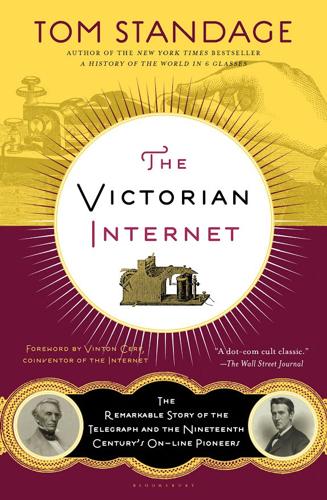
Victorian Internet
by
Tom Standage
Published 1 Jan 1998
Nobody who knew anything about telegraphy would be foolish enough to risk building a transatlantic telegraph; besides, it would cost a fortune. So it's hardly surprising that Cyrus W. Field, the man who eventually tried to do it, was both ignorant of telegraphy and extremely wealthy. He was a self-made man from New England who amassed his fortune in the paper trade and retired at the age of thirty-three. After spending a few months traveling, he happened to meet an English engineer, Frederic N. Gisborne, who introduced him to the business of telegraphy. Gisborne was looking for a backer after his failed attempt in 1853 to build a telegraph cable across Newfoundland, with a link to the mainland across the Gulf of St.

Paper Machines: About Cards & Catalogs, 1548-1929
by
Markus Krajewski
and
Peter Krapp
Published 18 Aug 2011
A low card between two higher ones is bridged by the fingers and lost.”58 After the successful introduction of the American Library Association’s card format, the attempt to standardize index card quality once again seems to be accepted by the market. Herbert Davidson is delighted about the successful word of mouth and the growing sales. “We have made a standard never known to the paper trade before.”59 Starting with that “greatest library invention,” the card index, Library Bureau expands its product range bit by bit into areas that are based on a library or archival cataloging logic, yet generate massive economic demands. In 1869, two different file cabinets are invented: on the one hand, E.

A Wealth of Common Sense: Why Simplicity Trumps Complexity in Any Investment Plan
by
Ben Carlson
Published 14 May 2015
I found buy and sell recommendations are much easier to make if you don't have to back them up with actual invested capital. I can't blame these analysts, because that's the nature of the industry. But there's something to be said for the emotions that come into play when you have your cold, hard savings invested and not just paper trades or opinions. Being wrong is a much different feeling than losing money. Emotions tend to affect future decisions once you've felt the sting of losses. Finally, independence is of the utmost importance when you are receiving financial advice. Not all analysts are compromised or bad people. Many offered useful research even though their recommendations weren't the greatest.

The Secret Club That Runs the World: Inside the Fraternity of Commodity Traders
by
Kate Kelly
Published 2 Jun 2014
Moreover, a sudden move against the refinery’s owner in the crude or jet-fuel market could wipe out its profit margins. The whole undertaking struck many observers as either a foolish fantasy deal or a capitulation to the idea that it was a failure at fuel hedging. “They must have gotten burned on paper trades in the past,” groused one commodities trader. Ruggles, who was busy negotiating with BP and traders in Alex Beard’s division of Glencore over crude supply contracts for Trainer, took the criticism in stride. He had been disappointed not to bring in a private-equity partner for the refinery investment, which was one of his original ideas for sharing the ambitious project’s risk.

The botany of desire: a plant's-eye view of the world
by
Michael Pollan
Published 27 May 2002
According to Joseph Schumpeter, it is not at all unusual for the birth of a new business to be attended by a speculative bubble as capital rushes in, dazzled by the young industry’s wildly exaggerated promise. Every bubble sooner or later must burst—the carnival that was permanent would spell the end of the social order. In Holland the crash came in the winter of 1637, for reasons that remain elusive. But with real tulips about to come out of the ground, paper trades and futures contracts would soon have to be settled—real money would soon have to be exchanged for real bulbs—and the market grew jittery. On February 2, 1637, the florists of Haarlem gathered as usual to auction bulbs in one of the tavern colleges. A florist sought to begin the bidding at 1,250 guilders for a quantity of tulips—Switsers, in one account.

The Global Minotaur
by
Yanis Varoufakis
and
Paul Mason
Published 4 Jul 2015
From this book’s perspective, suffice it to say that the famous duo’s politics proved immensely helpful to the rise of our Global Minotaur. Britain’s image as an entrepreneurial society, and all the razzmatazz generated by the cocky estate agents and slick bankers, depended heavily on the City’s paper trades and the rising house prices. These twin bubbles developed for the simple reason that London had skilfully situated itself as a strategic refuelling stop on the migration routes that the world’s capital took to reach New York. Toxic theory, Part B: economic models and assorted delusions The Global Minotaur relied on sympathetic governments standing aside while its mammoth asymmetries were gaining shape.

When I Fell From the Sky
by
Juliane Koepcke
,
Ross Benjamin
and
Beate Rygiert
Published 22 Sep 2011
The letter of recommendation, however, opened not only the door for him, but also the hearts of these people, who later became my godparents. So it was that along with our home—the Humboldt House—my godfather’s house became one of my favorite places in Lima. My godfather and his family were German too and made a fortune in Peru in the cotton and paper trade. When my mother arrived in Lima, these faithful friends even organized my parents’ wedding. Up to the age of fourteen, I often spent vacations there. I loved that house, built in Bauhaus style, with its magical garden, swimming pool and goldfish pond, in which I learned to swim. In this garden I also sometimes let my tinamous, which I always brought along in a cage, run free.
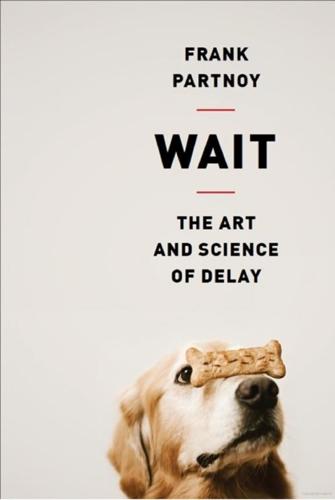
Wait: The Art and Science of Delay
by
Frank Partnoy
Published 15 Jan 2012
The computers involved in high-frequency trading buy and sell faster and more frequently than any person possibly could. The industry dates back to the late 1990s, when regulators first authorized electronic stock exchanges. Before then, the bulk of trading in stocks listed on the New York Stock Exchange was done through specialists—human beings who walked around a vast trading floor covered with cigar ash and paper trade records. I still remember joining the bedlam of the NYSE floor one day in the 1990s when a law school friend arranged a tour. It was frantic, with men shouting, lights blinking, and phones ringing.1 At the time, a trade was fast if it took less than a few seconds. Today, high-frequency trading accounts for 70 percent of U.S. stock trades.
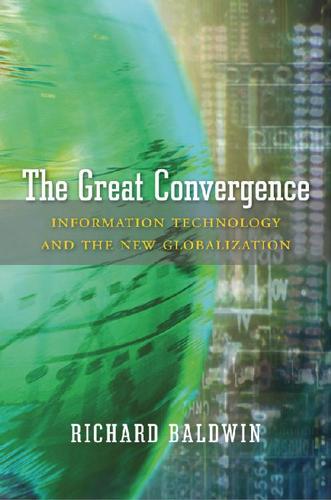
The Great Convergence: Information Technology and the New Globalization
by
Richard Baldwin
Published 14 Nov 2016
While the revolutionary implications of the New Globalization are being incorporated into thinking about development, twentieth-century mental models linger. The chapter thus starts with a quick overview of that thinking. If nothing else, it provides an excellent springboard for organizing reflections on the new thinking. Note that this chapter builds on my paper, “Trade and Industrialization after Globalization’s Second Unbundling,” but it also draws on the World Bank’s new project, which studies ways of making global value chains work for development.1 Traditional Thinking about Industrial Development Mainline thinking about development has seen three waves—or really two waves and a surrender, according to leading development economists David Lindauer and Lant Pritchett.
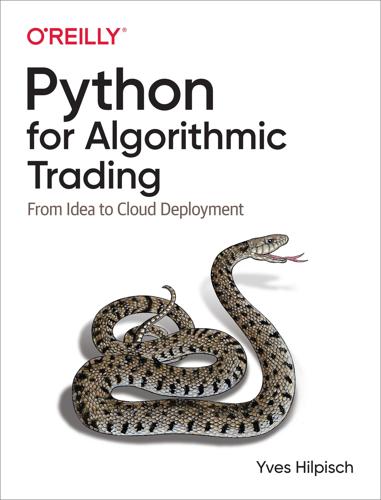
Python for Algorithmic Trading: From Idea to Cloud Deployment
by
Yves Hilpisch
Published 8 Dec 2020
A major strength of the platform are the RESTful and streaming APIs (see Oanda v20 API) via which traders can programmatically access historical and streaming data, place buy and sell orders, or retrieve account information. A Python wrapper package is available (see v20 on PyPi). Oanda offers free paper trading accounts that provide full access to all technological capabilities, which is really helpful in getting started on the platform. This also simplifies the transitioning from paper to live trading. Jurisdiction Depending on the residence of the account holder, the selection of CFDs that can be traded changes.
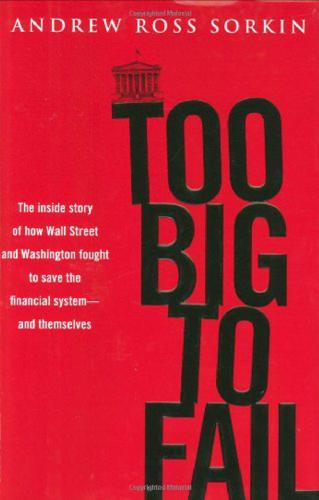
Too big to fail: the inside story of how Wall Street and Washington fought to save the financial system from crisis--and themselves
by
Andrew Ross Sorkin
Published 15 Oct 2009
The aristocratic, Yale-educated Lehman had reigned during the firm’s glory years and was a banker to some of the biggest and most important U.S. corporations early in the American Century. By the 1960s the firm’s advisory banking business was second only to that of Goldman Sachs. But because Robert Lehman and the other partners hated the fact that corporate clients would have to go to Goldman for their financing needs, Lehman decided to start its own commercial paper-trading operation, hiring Lewis Glucksman from the powerful Wall Street investment bank of A. G. Becker to run it. When Fuld came on board, Glucksman’s trading operation was beginning to account for a majority of the profits at Lehman. The trading space was noisy and chaotic, with overflowing ashtrays, cups of tepid coffee, and papers piled on the tops of terminals and under the telephones.
…
Henriques, “Lewis Glucksman, Veteran of a Wall St. Battle, Dies at 80,” New York Times, July 8, 2006. Lehman’s history: Charles Geisst, The Last Partnership: Inside the Great Wall Street Dynasties (New York: McGraw-Hill, 2001), 49–51; Auletta, Greed and Glory On Wall Street, 27–30. commercial paper-trading operation: Keith Dovkants, “The Godfather, a Man They Call the Gorilla and How a Banking Legend Was Lost,” Evening Standard (London), September 16, 2008. While this anecdote has been reported previously, the scene and dialogue between Kaplan and Fuld have been reported newly by this author. A brief mention of this event was previously reported by Fishman, “Burning Down His House,” New York.

The Misbehavior of Markets: A Fractal View of Financial Turbulence
by
Benoit Mandelbrot
and
Richard L. Hudson
Published 7 Mar 2006
They are closely related and were first presented in Mandelbrot 1997a; see also Mandelbrot 1991abcde. The first tests were reported in Mandelbrot, Calvet, and Fisher 1997, Calvet, Fisher, and Mandelbrot 1997, and Fisher, Calvet, and Mandelbrot 1997. 216 “In fact, this concept…” See Mandelbrot and Taylor 1967. 216 “I co-authored in 1967” In that paper, trading time was not taken to be multifractal, but fractal—but neither term was used because they had not yet been coined. That is, the best I could do in 1967 was to consider the increments of trading time as statistically independent, hence to model the Noah but not the Joseph Effect. The novelty I reported in 1972 was that the Noah and Joseph Effects could be united in an intrinsic fashion. 217 “market behavior” Originally, the function f(α) arose in Mandelbrot 1972, 1974, as the logarithm (suitably scaled) of a basic probability.
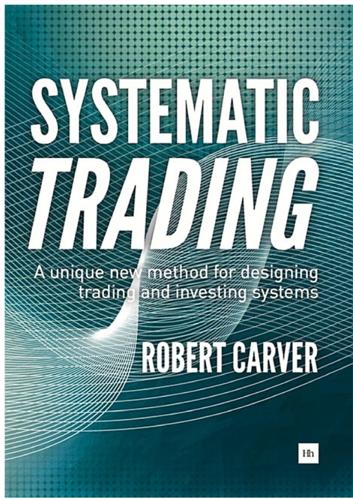
Systematic Trading: A Unique New Method for Designing Trading and Investing Systems
by
Robert Carver
Published 13 Sep 2015
Rounded target position Portfolio instrument position rounded to nearest block. Trade You should now put on the trade and once completed calculate the initial stop loss relative to the entry price. With judicious use of spreadsheets the above steps can be completed in a few moments. 218 Chapter Thirteen. Semi-automatic Trader Trading diary Here is some paper trading I did using the semi-automatic trading system. All the calculations here have been done with a spreadsheet, which is available from my website. Prices and other values are rounded to make the example clearer. 15 October 2014 Typical minimum spread bets are £10 a point on crude, £5 on US S&P 500 equities and £1 on the European Euro Stoxx equity index.

Windfall: The Booming Business of Global Warming
by
Mckenzie Funk
Published 22 Jan 2014
There were exchange rates for different parts of the river system, he explained—owing to evaporation and local regulations, a liter in the Murrumbidgee Valley might not be worth quite the same as a liter in Murray Bridge—and there were volume caps to navigate; some states were still protectionist about their water, though it was getting better. These were paper trades, conducted by phone and Internet. Buyer and seller could be hundreds of miles apart. One would turn off his pumps, and the other would turn his on. The water market in 2008, near the peak of the drought, was worth $1.3 billion, and it had been growing by 20 percent a year. Bulk water in Australia is measured by the megaliter, equivalent to 264,000 gallons.

Half the Sky: Turning Oppression Into Opportunity for Women Worldwide
by
Nicholas D. Kristof
and
Sheryl Wudunn
Published 7 Sep 2008
—LU XUN, “ANXIOUS THOUGHTS ON ‘NATURAL BREASTS’” (1927) We’ve been chronicling the world of impoverished women, but let’s break for a billionaire. Zhang Yin is a petite, ebullient Chinese woman who started her career as a garment worker, earning $6 a month to help support her seven siblings. Then, in the early 1980s, she moved to the special economic zone of Shenzhen and found a job at a paper trading company partly owned by foreigners. Zhang Yin learned the intricacies of the paper business, and she could have stayed and risen in the firm. But she is a restless, ambitious woman, buzzing with entrepreneurial energy, so she struck out for Hong Kong in 1985 to work for a trading company there.
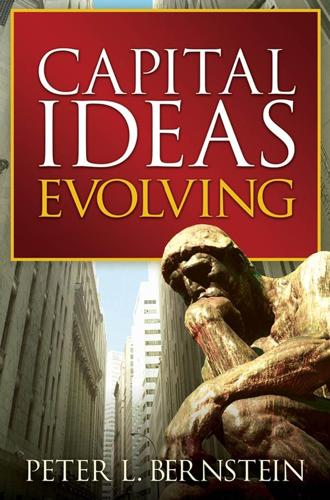
Capital Ideas Evolving
by
Peter L. Bernstein
Published 3 May 2007
Then all prices would clear without variation, everyone would have the same risk tolerance, everyone would earn same rate of return, and everyone would be taking on the same level of risk. To some extent, this process is already well under way. REITs are a conversion of real estate from an asset you can kick to a piece of paper trading in the financial markets. Private equity used to be priced in a negotiation between seller and buyer; now private equity is priced in auction markets. And this transformation is spreading to other formerly nonliquid asset classes like timber and commodity markets in general. When even the measurement of alpha is a matter of debate, the market behavior of any asset class—even stocks and bonds—is likely to be unstable and unpredictable.
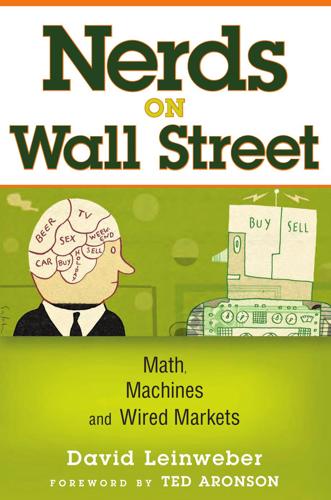
Nerds on Wall Street: Math, Machines and Wired Markets
by
David J. Leinweber
Published 31 Dec 2008
Topping my list are the following: • • • • Electronic market access Market data graphics Spreadsheets Databases and Internet information For quantitative investors, I would add portfolio optimization despite the barriers to wider acceptance of this technology such as sensitivity to errors and unintuitive results (unless they are constrained). Electronic Market Access Thirty years ago, the Designated Order Turnaround (DOT) and NASDAQ electronic systems were concepts on their way to notions. A so-called program trade literally involved wheelbarrows of paper trade tickets physically distributed to floor traders. Today, trading floors from London to Tokyo have been replaced by machinery. Purely electronic markets, the electronic communication networks (ECNs), have come from nowhere to claim a significant portion of volume. Increasingly, the discussion of the future of exchanges is a discussion of technology.
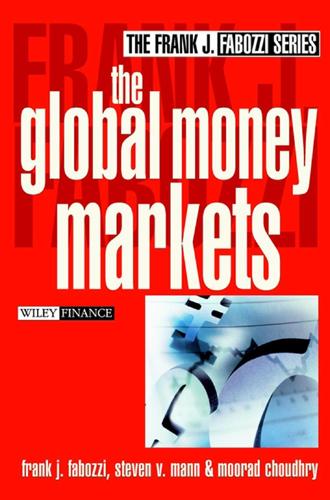
The Global Money Markets
by
Frank J. Fabozzi
,
Steven V. Mann
and
Moorad Choudhry
Published 14 Jul 2002
To pay off holders of maturing paper, issuers generally “rollover” outstanding issues; that is, they issue new paper to pay off maturing paper. Another consideration in determining the maturity is whether the paper would be eligible collateral by a bank if it wanted to borrow from the Federal Reserve Bank’s discount window. In order to be eligible, the paper’s maturity may not exceed 90 days. Because eligible paper trades at a lower cost than paper that is ineligible, issuers prefer to sell paper whose maturity does not exceed 90 days. The combination of its short maturity and low credit risk make commercial paper an ideal investment vehicle for short-term funds. Most investors in commercial paper are institutional investors.
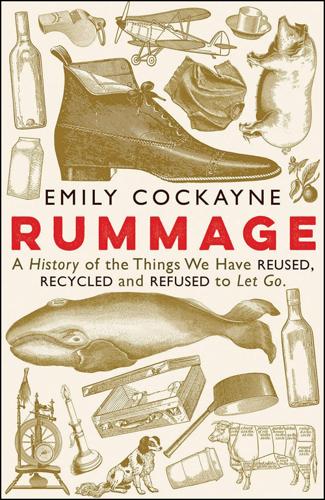
Rummage: A History of the Things We Have Reused, Recycled and Refused To Let Go
by
Emily Cockayne
Published 15 Aug 2020
Bois durci offered an alternative: one could simply affix a moulded object, ‘a cheap mode of truly artistic ornamentation’ (according to Viëtor’s own advertisement) ‘suitable for pianoforte panels, &c’.92 This ornamentation featured such delights as ‘Medallions, Shells, Rosettes, Corners, Composers’ Heads, Greek Heads, Lyres, Wreaths, Escutcheons, Bouquets, Griffins, Caryathides’, depicting ‘Fire and Water, The Seasons, Horn of Plenty, Renaissance Frames, Juvenile Musicians’ and other designs.93 Just such images adorned the fanciest pianos on the market: those of Steinway & Sons, from New York, and Bechstein, from Berlin. 40. Lyre made from bois durci, a pressed and polished compound of blood and sawdust, probably made by Fritz Viëtor, author’s own. Since 1880 Viëtor had also been back in the paper trade, rivalling his former partner Ferdinand Schroeder and taking as the base for his business a ‘very spacious’ newly erected warehouse on Fann Street.94 Just as Viëtor settled into these premises, a few minutes’ walk away there was a sale of fire-damaged paper items salvaged from a wholesale stationers after a blaze.
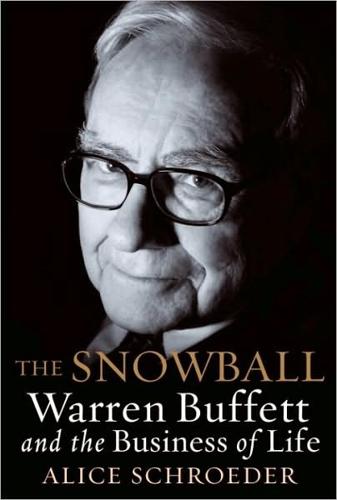
The Snowball: Warren Buffett and the Business of Life
by
Alice Schroeder
Published 1 Sep 2008
Some grasped it immediately as a fascinating, all-consuming treasure hunt and others recoiled from it as a dreary homework assignment. Warren’s reaction was that of a man emerging from the cave in which he had been living all his life, blinking in the sunlight as he perceived reality for the first time.16 His former concept of a “stock” was derived from the patterns formed by the prices at which pieces of paper traded. Now he saw that those pieces of paper were simply symbols of an underlying truth. He instantly grasped that the patterns formed by trading these pieces of paper did not signify a “stock” any more than those childhood piles of bottle caps had signified the effervescent, sweet-sour-spicy taste of soda pop that made people crave it.
…
More than fifty new investment funds had come to market, with nearly sixty-five more waiting in the wings.3 For the first time in U.S. history, it became fashionable for a broad group of individuals to own stocks.4 Buffett would describe this phase as resembling “an ever-widening circle of chain letters,” even a “mania,” populated mostly by “the hopeful, credulous, and greedy, grasping for an excuse to believe.”5 In a business that was still transacted through paper trade tickets and physical delivery of stock certificates, trading volume had reached such a level that the market was nearly crushed under the weight of paperwork. Huge numbers of orders were duplicated or never executed, the tickets misplaced or simply thrown in the garbage, while file rooms worth of stock certificates disappeared, presumed stolen, amid rumors that the Mafia had infiltrated the market.
…
The topic of the day was the slump in trading and merger business at Salomon and the $75 million that Black Monday had cost the firm.14 Salomon faced the cleanup from Black Monday weakened by the fact that, only days before the crash, Gutfreund, his moon-shaped face impassive, had head-chopped even highly valued longtime employees, laid off eight hundred people, and discontinued marginally profitable businesses such as commercial paper trading (a backwater of the bond business) so abruptly that the disruption hurt relationships with some important clients almost beyond repair.15 These and the losses from Black Monday were going to gouge a deep hole in the shareholders’ pockets that year. And with that, Salomon’s stock fell into the tank.

Inside the House of Money: Top Hedge Fund Traders on Profiting in a Global Market
by
Steven Drobny
Published 31 Mar 2006
Even though there are 50 sheets that you get every morning, giving a review of what happened or everybody’s views and biases, what there isn’t as much of is the ability to interact with other smart people who are managing money. You said earlier that “talk is cheap.” How do you respond to the notion that writing a newsletter is like paper trading or just cheap talk? The truth is that when you retire, you always have a trade on because you have to manage your personal portfolio.Then it becomes a question of being honest. In my sheet, what I do is have biases and trades. The biases are the talk that tells you where I think things are going.The trades are attempts at finding good risk/reward bets that are not inconsistent with my biases.
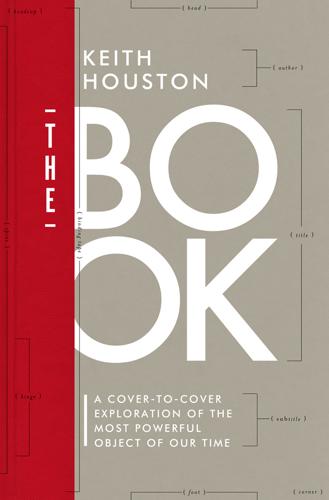
The Book: A Cover-To-Cover Exploration of the Most Powerful Object of Our Time
by
Keith Houston
Published 21 Aug 2016
Richard Daniel Smith, “Paper Impermanence as a Consequence of pH and Storage Conditions,” The Library Quarterly 39, no. 2 (1969): 154. 60. Gary Bryan Magee, Productivity and Performance in the Paper Industry: Labour, Capital and Technology in Britain and America, 1860–1914 (Cambridge: Cambridge University Press, 1997), 104–11. 61. Hunter, Papermaking, 538. 62. John Bidwell, American Paper Mills, 1690–1832: A Directory of the Paper Trade, with Notes on Products, Watermarks, Distribution Methods, and Manufacturing Techniques (Hanover, NH: Dartmouth College Press, 2013), xxvi, 1; John W. Maxson Jr., “Papermaking in America from Art to Industry, 1690 to 1860,” The Quarterly Journal of the Library of Congress 25, no. 2 (1968): 121; Matt T.
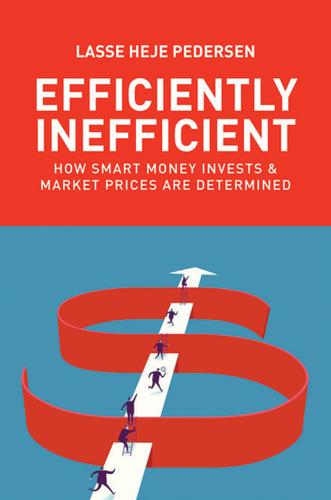
Efficiently Inefficient: How Smart Money Invests and Market Prices Are Determined
by
Lasse Heje Pedersen
Published 12 Apr 2015
The former starts from a macro view of the portfolio, and the latter builds up, trade by trade, from the micro level. • Portfolio rebalance rule. This trading rule looks at the entire portfolio of securities and defines how it is rebalanced. This trading rule is backtested as follows. For each time period, ○ Determine the optimal portfolio of securities. ○ Make a (paper) trade to rebalance to this portfolio. As an example of this type of trading rule, suppose that you find the top 10% cheapest stocks by their book-to-market ratio on the last trading day of each month. You then buy an equal-weighted portfolio of these stocks and hold it for a month. Next month, you rebalance to the top 10% cheapest stocks at that time, and so on.

Londongrad: From Russia With Cash; The Inside Story of the Oligarchs
by
Mark Hollingsworth
and
Stewart Lansley
Published 22 Jul 2009
‘It was like a big building block in which there were many apartments, everybody had his own key and was doing his own business with his own premises,’ admitted Collongues-Popova.9 The network only emerged during an investigation by the French tax authorities, which had uncovered large amounts of cash moving in and out of Collongues-Popova’s bank accounts. During the investigation into Yukos, she was asked to go to Moscow to testify but refused because she feared for her safety. In an attempt to clear her name, in August 2003 she sent the Russian prosecutors boxes of documents including corporate papers, trading reports, and bank statements dating from 1996 to 2000. While some of the billions that flew out of Russia and into foreign bank accounts were the result of tax avoidance, a great deal also disappeared through wire transfers, phony import-export documents, oil shipments, and other devices.10 It mostly came from what should have been highly profitable companies providing the backbone of the Russian economy.

The Predators' Ball: The Inside Story of Drexel Burnham and the Rise of the JunkBond Raiders
by
Connie Bruck
Published 1 Jun 1989
The bondholders would tend to accept these offers, no matter how displeasing, because they would find themselves between the proverbial rock and a hard place. As Levy explained, these exchange offers are essentially an arbitrage. If a buyer purchased at par a bond which then came to trade at sixty cents on the dollar, he would probably be willing to exchange it for a piece of paper trading at sixty-five cents—especially if he thought his alternative was to be stuck holding the bonds of a bankrupt company. For these remedies to spell salvation for companies in such dire straits, however, they would have to be completed quickly; there was no time for the months-long process of registering with the SEC.

Tailspin: The People and Forces Behind America's Fifty-Year Fall--And Those Fighting to Reverse It
by
Steven Brill
Published 28 May 2018
In 1971, the collapse of the Bretton Woods international accords—which had locked in the relative value of major currencies since 1944—accompanied by President Richard Nixon’s decision to let the value of the dollar float freely, created a new market for speculating in the fluctuation of exchange rates. With technology emerging to facilitate trades around the world instantaneously, knowledge workers had new pieces of paper (francs, dollars, pounds) to trade for other pieces of paper. Trading pieces of paper was on its way to becoming America’s prime economic activity, literally. In 1950, the financial industry accounted for 9 percent of all corporate profits. Since the beginning of the twenty-first century, except for a brief downturn during the Great Recession, finance’s annual share of total American profits has hovered at about 30 percent, making it by far the largest industry sector in terms of profits produced.
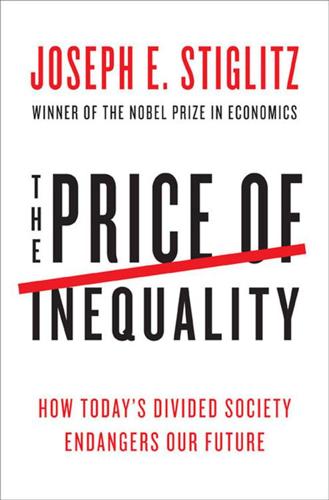
The Price of Inequality: How Today's Divided Society Endangers Our Future
by
Joseph E. Stiglitz
Published 10 Jun 2012
,” IMF Working Paper, 2007, argues that technological change was more important than globalization, especially on the wages of low skilled workers.) But more recently, Paul Krugman has argued that the impact of globalization may be larger than was previously thought. “Trade and Inequality, Revisited,” Vox, June 15, 2007; see also his paper “Trade and Wages, Reconsidered,” Brookings Panel on Economic Activity, Spring 2008. Part of the difficulty is that globalization is intertwined with the changing productivity within the United States, the weakening of unions, and a host of other economic and societal changes. There is no obvious way to specify the counterfactual: what would the degree of inequality have been, if we had not had globalization, but everything else had been the same?

Alpha Trader
by
Brent Donnelly
Published 11 May 2021
Retail traders No retail trader can succeed with a $1,000 trading account because the income generated from the most successful strategy will be too small to move the needle. Even a 300% return will not be enough to make a difference and so the trader is very likely to employ too much leverage and blow up the account via gambling. A tiny trading account is OK for learning the markets and much better than paper trading. It might give you a sense of the emotional and psychological hurdles that come with live trading, but it will never give you a chance to really know what kind of trader you are. In general, position sizing can account for most issues around insufficient capital. If your capital is small, you need to take smaller positions.
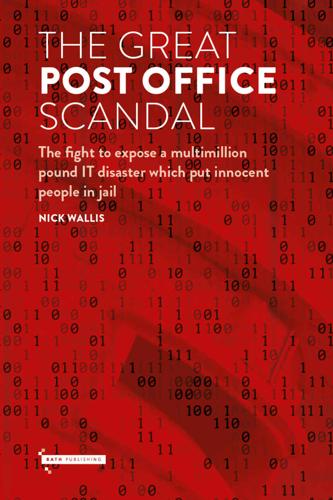
The Great Post Office Scandal: The Fight to Expose a Multimillion Pound Scandal Which Put Innocent People in Jail
by
Nick Wallis
Published 18 Nov 2021
Lee is convinced the temp had reported misbalancing problems with Horizon in the branch on the Wednesday evening and had either refused to use it until it was fixed, or the Post Office had told her not to use it until someone had applied a fix. Lee believes that whilst the screens were blank on that Thursday morning a remote fix was being applied. After four hours of paper trading, the system rebooted and the temp began using Horizon again. From that moment on, Bridlington’s mysterious balancing problems ceased. Lee remembers something else about the day the terminals were out of use. ‘I’d been up quite early that morning because I was sorting out the newspapers … by this stage I’d handed over the keys to the temp and the Post Office had changed the alarm codes on the counter, so I had no access to the branch at all.
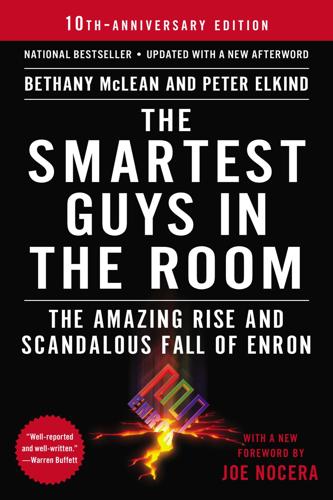
The Smartest Guys in the Room
by
Bethany McLean
Published 25 Nov 2013
Far from being the typical high-achieving MBA, Cox was a high school dropout and former commercial fisherman who had started out at Enron in the basement graphics department. While working on projects for Skilling, he’d managed to convince the Enron executive to have the company bankroll his own printing business—and give him Enron’s printing work. Cox later returned to Enron and was running its paper-trading venture when Rice tapped him to head the broadband content sales team. “You could take David and drop him in the middle of the desert naked, and within a day, he’d figure out a way to make money,” Rice liked to say of Cox. The EBS deal chief, who had a reputation as a loose cannon, had clearly absorbed the Enron ethos.

The Rough Guide to New York City
by
Martin Dunford
Published 2 Jan 2009
It was here in 1735 that printer John The early days of stocks and bonds 52 In order to help America finance the Revolutionary War, Secretary of the Treasury Alexander Hamilton offered $80 million worth of bonds up for sale. Not only did the public snap them up, but merchants also started trading the bonds, along with bills of exchange, promissory notes, and other commercial paper. Trading became so popular that in 1792 a group of 22 stockbrokers and merchants gathered beneath a buttonwood tree on Wall Street, signing the “Buttonwood Agreement” and forming the initial trading group that would go on to be renamed the New York Stock Exchange in 1817. In the 1840s, a more individualistic group of stockbrokers forged a similar bond on the curbs of Broad Street.

The Rough Guide to New York City
by
Rough Guides
Published 21 May 2018
The origins of the exchange lie in the aftermath of the Revolutionary War, when Secretary of the Treasury Alexander Hamilton offered $80 million worth of government bonds for sale. Not only did the public snap them up, but merchants also started trading the bonds, along with bills of exchange, promissory notes, and other commercial paper. Trading became so popular that in 1792 a group of 22 stockbrokers and merchants gathered beneath a buttonwood tree on Wall Street, signing the “Buttonwood Agreement” and forming the initial trading group that would go on to be renamed the New York Stock Exchange in 1817. The event is commemorated by a tiny buttonwood tree on the sidewalk in front of 18 Broad St (it’s not the original).
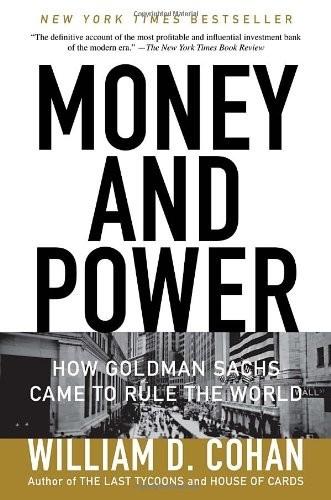
Money and Power: How Goldman Sachs Came to Rule the World
by
William D. Cohan
Published 11 Apr 2011
death of gold coins of IOUs bought and sold by, 1.1, 1.2, 1.3, 1.4, 1.5, 1.6, 5.1 money for Jewish immigrants collected by Sam Sachs made partner of, 1.1, 1.2 Goldman, Rebecca Goldman, Rosa see Sachs, Rosa Goldman Goldman, Sachs & Dreyfus Goldman Sachs: “Ad Hoc Profit Maximization Committee” at, 12.1, 12.2 Administrative Department of American Cyanamid Corporation lawsuit against annual budgeting at antitrust lawsuit against, 4.1, 8.1 arbitrage department of, 5.1, 5.2, 5.3, 5.4, 6.1, 6.2, 6.3, 6.4, 7.1, 7.2, 9.1, 9.2, 10.1, 11.1, 11.2, 11.3, 12.1, 15.1; see also Levy, Gustave Lehmann; Rubin, Robert bad news not shared by, 7.1, 7.2, 7.3; see also “big short” in battles with other companies board of directors at, 17.1, 17.2, 22.1 bond department of, 3.1, 3.2, 5.1, 5.2, 10.1, 10.2, 14.1 Bouton’s potential lawsuit against branch offices of, 3.1, 4.1 Broad Street building of, 4.1, 5.1, 6.1, 7.1 Buffett’s loan to, prl.1, prl.2 business department of Business Standards Committee of, 24.1, 24.2 Buying Department of, 7.1, 7.2, 7.3 calling effort of capital of, 1.1, 1.2, 4.1, 4.2, 5.1, 5.2, 6.1, 7.1, 9.1, 10.1, 10.2, 12.1, 12.2, 12.3, 14.1, 14.2, 14.3, 15.1, 15.2, 15.3, 16.1 Capital Structure Franchise Trading Group of Catching’s company created for Catching’s power grab at collusion accusations against commercial paper traded by, 1.1, 1.2, 1.3, 1.4; see also commercial paper compensation at, prl.1, prl.2, prl.3, prl.4, 5.1, 7.1, 7.2 competitiveness at confidentiality and nondisparagement agreements at, prl.1 conflict management by, prl.1, 15.1, 17.1 Corporate Finance Department of, 7.1, 7.2, 7.3, 17.1 Corzine’s desire to enlarge in crash of 1929, 2.1, 2.2, 2.3, 2.4, 3.1 Depression strategy of, prl.1, 3.1 discipline at 85 Broad Street building of, prl.1, 8.1, 10.1, 10.2, 17.1 envy of ethical code of, prl.1, 8.1, 16.1, 17.1 Executive Committee of, 15.1, 16.1, 16.2, 16.3, 16.4 factors in prowess of as family business fear of Financial Institutions Group of (FIG), 15.1, 15.2, 16.1, 16.2, 16.3, 16.4, 16.5, 16.6 fine paid by Firmwide Risk Committee at Fixed-Income, Currencies and Commodities (FICC) at, 14.1, 16.1, 17.1, 17.2, 17.3, 17.4, 17.5, 19.1 fixed-income division of, 10.1, 10.2, 10.3, 12.1, 12.2, 12.3, 13.1, 14.1, 14.2, 14.3, 14.4, 15.1, 15.2, 15.3, 16.1, 17.1 Ford IPO handled by, 4.1, 5.1, 5.2, 8.1, 12.1 foreign exchange department of, 1.1, 9.1, 14.1, 15.1, 15.2, 17.1 “great rehabilitation” of, 3.1, 3.2 hot IPO’s distributed by hundredth anniversary of internal e-mails of, prl.1, prl.2, prl.3, prl.4 International Advisory Committee of international expansion of, 8.1, 12.1, 12.2, 14.1, 14.2, 14.3, 14.4, 15.1, 15.2, 15.3, 16.1, 17.1, 17.2 interview process at investment banking of, prl.1, prl.2, 3.1, 4.1, 4.2, 4.3, 4.4, 5.1, 6.1, 7.1, 7.2, 8.1, 8.2, 8.3, 9.1, 9.2, 10.1, 10.2, 14.1, 14.2, 15.1, 15.2, 16.1, 18.1; see also investment banking Investment Banking Services (IBS) investment trusts of, 2.1, 2.2, 2.3, 2.4, 3.1, 3.2, 4.1, 5.1, 8.1, 9.1 J.
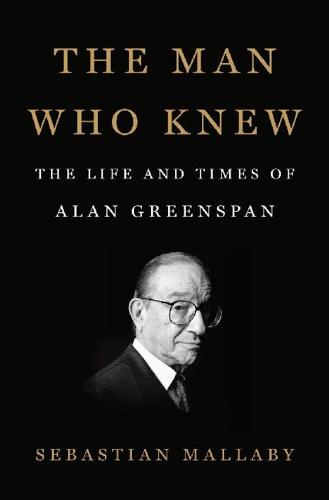
The Man Who Knew: The Life and Times of Alan Greenspan
by
Sebastian Mallaby
Published 10 Oct 2016
Knowing that regulators could not anticipate where the next shock would come from, Geithner aimed to boost the financial system’s overall resilience. He notched up some considerable victories—in particular, the plumbing of the derivatives market, which had consisted of a frightening mess of unconfirmed paper trades, was modernized, silencing one dog that would otherwise have barked during the 2008 crisis. But Geithner also wanted to increase Wall Street’s capital buffers so that the big houses could weather unanticipated shocks. On this goal, he soon ran up against the limits of regulation. The idea of requiring banks to hold more capital had enthralled regulators, including Greenspan, since the 1980s.
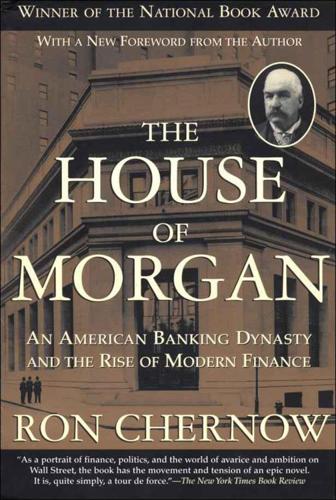
The House of Morgan: An American Banking Dynasty and the Rise of Modern Finance
by
Ron Chernow
Published 1 Jan 1990
He financed his frantic expansion by a staggering accumulation of debt. Later it was alleged in lawsuits that Phillips egged on Burr to borrow and expand too quickly. Whatever the truth, when crisis struck People Express, some bondholders felt betrayed by Morgan Stanley. They not only suffered serious losses, with some paper trading as low as 35 percent of the original issue price, but accused Morgan Stanley of failing to maintain a market during the turbulence. By one account, Morgan Stanley bought People bonds until it had $40 million worth in its inventory. There was a second dimension to the controversy. For two and a half months, as bondholders suffered, Morgan’s M&A Department shopped People to potential customers, exposing the firm to a possible conflict of interest.